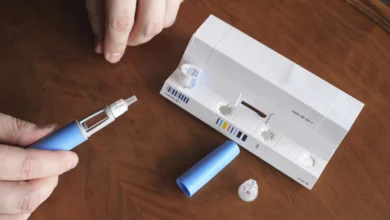
Cartilage Restoration: What It Is and How to Recover
Your body is filled with cartilage that is designed to provide protection for many of your bones and joints. You have cartilage in your knees, ankles, elbows, shoulders, and more.
Unfortunately, this cartilage can break down on you over time and eventually wear away completely. This can lead to bone-on-bone arthritis, which can be very painful.
You might be able to avoid this condition by having cartilage restoration performed. By using cartilage restoration to your advantage, you can repair cartilage damage that has been done to any of the joint cartilage in your body.
You can bring your articular cartilage back to life through the use of cartilage restoration. Find out what you need to know about cartilage restoration below.
Table of Contents
What Is Cartilage Restoration?
When you’re dealing with cartilage damage, there will usually be a “pothole” that will form in your cartilage. If you fail to do anything about it, this pothole will continue to grow until there isn’t any cartilage left.
Cartilage restoration is a procedure that involves reversing this process. During cartilage restoration, the pothole in your cartilage will be filled in with tissue that will grow over time. It’ll stop arthritis from setting in.
How Does Cartilage Restoration Work?
There are several procedures that can be used to perform cartilage restoration. Some of these procedures are:
- Microfracture surgery
- Osteochondral autograft transfer
- Autologous chondrocyte implantation
Although each of these procedures works a little bit differently, they’ll all have the same end goal in mind. An orthopedic surgeon will work to fill in a defect in a person’s joint cartilage to make it whole again.
Not everyone is going to have a successful cartilage restoration procedure. But the procedures that we just listed do tend to have high success rates as long as they’re carried out before a person’s cartilage is in terrible shape.
How Long Does It Take to Recover From Cartilage Restoration?
One thing that people will need to do to improve the chances of a cartilage restoration being a success is to prepare to spend a long time recovering. Generally speaking, it’s going to take up to 18 months for a person to get back to doing all the things that they used to do.
That being said, those who go through cartilage restoration should be able to resume walking, cycling, etc. within just a couple of months. But it can take a year and a half for them to return to more intense physical activity.Cartilage restoration is a procedure that involves reversing this process. During cartilage restoration, the pothole in your cartilage will be filled in with tissue that will grow over time. It’ll stop arthritis from setting in.
See If Cartilage Restoration Might Be Right for You
If you’re starting to experience any pain in your joints, you might want to look into whether or not you would be a good candidate for cartilage restoration. It could help you recover from a cartilage injury.
Cartilage restoration can also help you steer clear of having to deal with arthritis. It could be the key to keeping you active for the majority of your life.
Read through more health and wellness articles by poking around on the rest of our blog.








